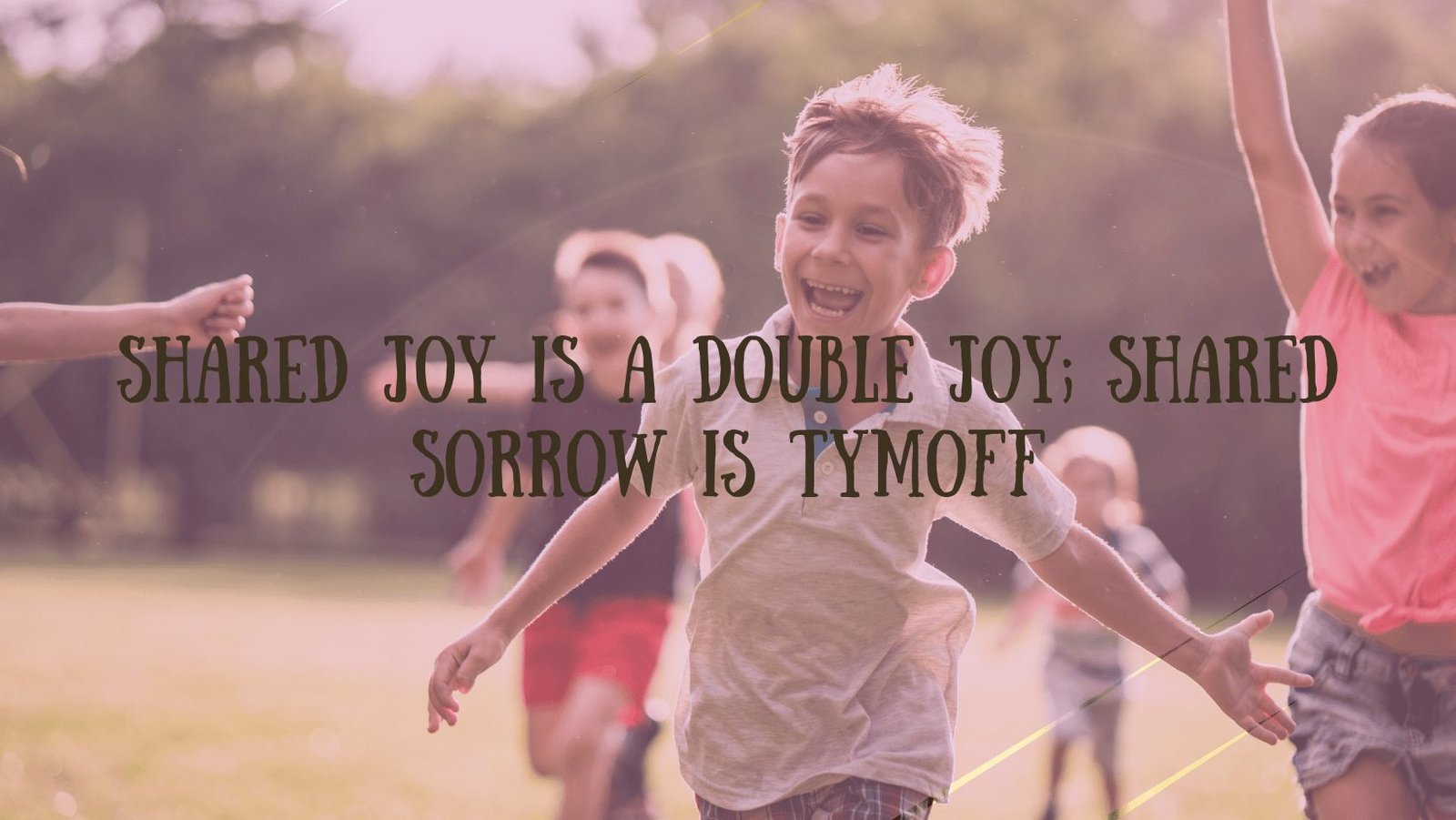The Swedish proverb, “Shared joy is a double joy; shared sorrow is half a sorrow” encapsulates a timeless truth about the human condition. Across cultures and throughout history, joy and sorrow have been central to our experiences, shaping the way we connect with the world and with each other.
The Power of Shared Joy
Joy, when shared, becomes magnified. It’s a phenomenon that transcends mere happiness, creating bonds and fostering unity. Whether it’s the collective cheer of a crowd at a concert or the intimate glow of a family celebration, shared joy has the power to bring people closer, creating memories that last a lifetime.
The Alleviation of Sorrow Through Sharing
Conversely, sharing our sorrows can significantly lighten our emotional burdens. The act of expressing grief or pain allows for a cathartic release, offering solace in the knowledge that we are not alone. Personal anecdotes and studies alike have shown that shared sorrow can pave the way for healing and resilience.
Psychological and Social Perspectives
From a psychological standpoint, sharing emotions is therapeutic. It reduces stress and bolsters emotional support systems. Socially, it contributes to the fabric of community life, nurturing empathy and understanding among individuals.
Practical Applications
In practice, sharing joy and sorrow requires openness and vulnerability. It’s about creating spaces—within families, among friends, or at the workplace—where people feel safe to express their true feelings. Encouraging such environments can lead to healthier, more supportive relationships.
Personal Reflections and Call to Action
Reflect on moments of shared joy and sorrow in your own life. Consider how these experiences have shaped your relationships and outlook. Now, take the initiative to share more openly, to listen actively, and to support those around you.
Conclusion
In summary, the act of sharing our deepest emotions is not just beneficial for individual well-being; it’s essential for societal harmony. By embracing both our joys and our sorrows, we can foster a world rich in compassion and connection. Let us all strive to share more, for in sharing, we find our common humanity.
Also Read: Love What You Have, Before Life Teaches You to Love – Tymoff
FAQs
What does the proverb “Shared joy is a double joy; shared sorrow is halved” mean?
It means that when we share our happiness with others, it increases, and when we share our sorrows, the burden feels lighter.
How can sharing joy improve my relationships?
Sharing joy can strengthen bonds, create lasting memories, and foster a positive environment that nurtures relationships.
Why is it important to share our sorrows with others?
Sharing sorrow can provide emotional relief, offer support, and remind us that we are not alone in our struggles.
Can sharing emotions have psychological benefits?
Yes, sharing emotions can reduce stress, improve mental health, and increase feelings of support and belonging.
How can I encourage open emotional expression in my community or workplace?
Foster an environment of trust and safety where people feel comfortable expressing their feelings without fear of judgment.
What are some practical ways to share joy with others?
Celebrate achievements, express gratitude, participate in group activities, and simply spend quality time together.
How can sharing sorrow help build resilience?
By facing adversity together, we can learn coping strategies, gain perspective, and develop a stronger sense of community.
What should I consider before sharing my emotions with someone?
Consider the trust level, the appropriateness of the setting, and the potential impact on the person you’re sharing with.
Are there any risks to sharing emotions?
Over-sharing or sharing with the wrong person can lead to discomfort or misunderstandings, so it’s important to share wisely.
How can I be a good listener when someone shares their joy or sorrow with me?
Be present, show empathy, avoid judgment, and offer support through your words and actions.
